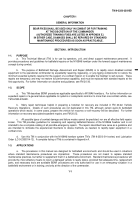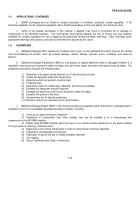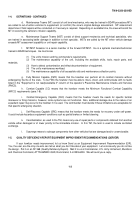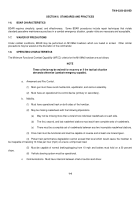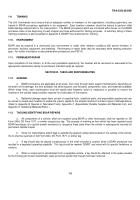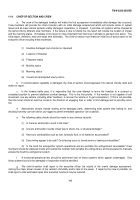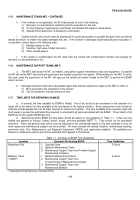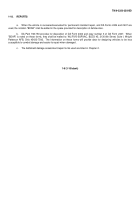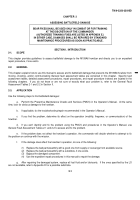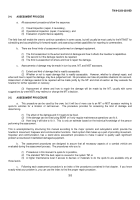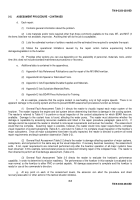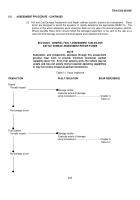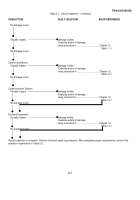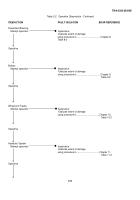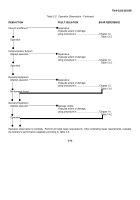TM-9-2350-358-BD - Page 25 of 343
TM 9-2350-358-BD
2-4.
ASSESSMENT PROCESS
a.
All assessment procedures follow the sequence:
(1)
Visual Inspection (repair, if necessary),
(2)
Operational inspection (repair, if necessary), and
(3)
Evaluation of performance capability.
The field fixes will enable the crew to continue operations in some cases, but will usually be most useful to the MT/MST for
scheduling and accomplishing fix-forward repairs and assessing combat capabilities for reporting to commanders.
b.
There are three kinds of assessments performed on damaged equipment.
(1)
The first assessment is the extent and kind of damage and how it affects the howitzer’s capabilities.
(2)
The second is if the damage needs to be repaired.
(3)
The third is assessment of where and how to repair the damage.
c.
Assessments of damage may be made in turn by crew, MT, and MST assessors.
(1)
Extent and kind of damage that is readily assessable.
(2)
Whether or not to repair damage that is readily assessable.
However, whether to attempt repair, and
when and how to repair the damage, may be a judgement call.
No procedure can take all possible situations into account.
Assessment of damage needed to be repaired will be made jointly by the MT and chief-of-section as they evaluate the
howitzer for further operation or recovery.
(3)
Assessment of where and how to repair the damage will be made by the MT, usually with some
suggestions by crew MSTs may redirect or change the MT’s decision.
2-5.
ASSESSMENT PROCEDURE
a.
This procedure can be used by the crew, but it will be of more use to an MT or MST assessor working to
quick-fix vehicles for a mission of self-recover.
The procedure provides for assessing the kind of damage and
determining.
(1)
The effect of the damage and if it needs to be fixed.
(2)
If the damage can be fixed using BDAR or if only regular maintenance operations can fix it.
(3)
How long it will take to fix it.
This is only an estimate based on the technical knowledge of the person
performing the assessment.
This is accomplished by structuring this manual according to the major systems and subsystems which provide the
howitzer’s movement, firepower and communication functions.
Each system that makes up a part of providing movement,
firepower and communication, has a stand alone assessment procedure to make it easier to qualify each significant
problem encountered in battlefield damaged equipment.
b.
The assessment procedures are designed to assure that all necessary aspects of a combat vehicle are
evaluated during the assessment process.
The procedures refer you to:
(1)
Procedures in this manual if a quick-fix is possible,
(2)
The standard TM if the best repair is covered in the system TM, or
(3)
A higher maintenance level if access to devices or materials to do the quick-fix are available only at
those levels.
c.
Following each assessment procedure is an index of the procedures contained in that chapter.
If you know
exactly what your problem is, you can use the index to find the proper repair procedure.
2-2
Back to Top

